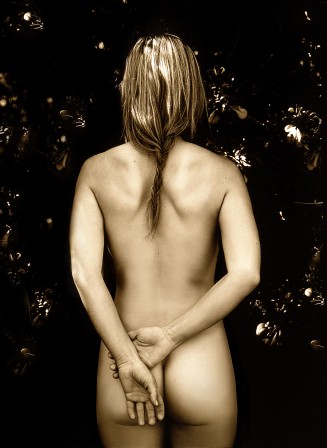dr5: A Fresh Spin on Cross Processing

By nicole mabry
13 July 2007
Ok so we are all familiar with the term cross processing. For me this has always meant processing color negatives as positives/chromes, which resulted in unnatural or opposite colors and high contrast. Being one to love high contrast, I delved into this realm with gusto. After trying it out several times, the novelty wore off and I went back to regular processing. Then one day in 2000 while working at a photo agency in Los Angeles, a co-worker was examining some of her self portrait chromes. I asked to take a peek and to my surprise, they were sepia toned. How was this possible? Medium format chromes already tinted? She smiled and replied, "dr5, look it up." I quickly did just that.
The website, www.dr5.com, while obviously in basic stages at the time, had me captivated at first glance. The dr5 process is black and white cross processing, but creates results I never imagined from my experiences with its color counterpart. The film review link showed me every film they will cross process, and an example of what I should expect for each type. I had the choice to have my film sepia tinted during processing or left plain, and I could see examples of both. It also showed me the push and pull process and settings necessary for each film so I wouldn't be trying this out blind, and be left with unsatisfactory results. dr5's creator David Wood made this process so simple, I felt I couldn't go wrong. Within the next few days, I rushed out, bought film, and shot my first rolls. I could barely wait the week or so it took to get the chromes back but I couldn't have been happier with the results. Everything Mr. Wood promised he certainly delivered. My images were sharper and had more tonal range than I'd ever accomplished before with regular processing. I shoot mostly skin and the textures in my skin tones were palpable.
By far the best part is the contrast. During regular cross processing you are dealing with color, so while contrast works really well with the unusual color palette it creates, in my experiences it also tends to lose detail in the lights and darks. In my images with dr5, this was less the case. The only places I had detail fallout due to the increased contrast were the absolute blacks, and almost nowhere did I have absolute whites. What's more, I have a much more expansive tonal range leading in and out of my lights and darks. This is really hard to create with normal processing, or even in Photoshop, and still retain this level of contrast.
Not only is this an innovative process, but its creator is an amazing person. When I first moved to New York City, the dr5 lab was one of the first places I visited (with a freshly shot roll of film in hand of course). David Wood was very friendly, informative, and eager to talk about his lab and methods. He also gave me some numbers to call for possible job leads. He openly states in his Creator's Statement, "I did not create the dr5 process to get rich. My only goal was to give something valuable to the photo community, to photography. The root of what I've created is versatility, permanence and exceptional image quality. Explore the process to its fullest." I am happy to say that I am on my way to doing just that. Thank you David Wood for your truly invaluable contribution to photography.






